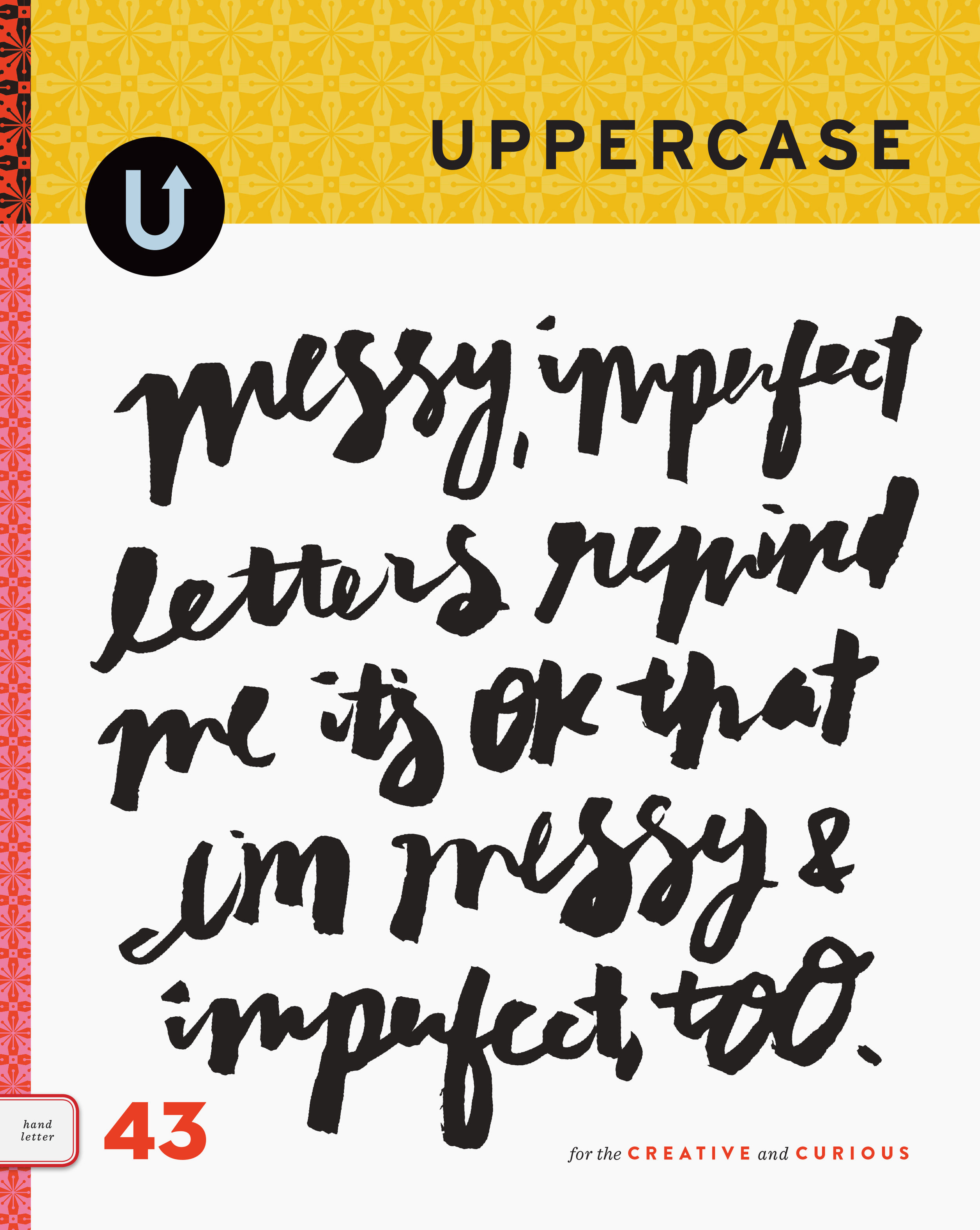my top three tips for the perfect pitch
/Last week I was interviewed by writer Christine Chitnis for her forthcoming online course, Pitch Perfect. Available through Squam Art Workshops, this 4-week course will give you the foundation for creating professional pitches. Whether you're a writer or an artist or artisan trying to get your work published, it's an informative and worthwhile course.
I receive pitches daily, so I've seen my fair share of great and not-so-great pitches. Here are my tips on creating a solid pitch.
please note: If you've never communicated personally with me before and are pitching an idea to UPPERCASE, it is very important to follow the instructions posted on the submissions page. First off, it tells me that you have done some research by reading the website and secondly—and importantly!—it shows me that you can follow and respect direction... Definitely something I take into consideration when commissioning someone to create content or an illustration.
1. know the magazine
Know our audience, the tone of our writing and be familiar with past issues as to not pitch a topic close to something we have recently covered. From my perspective, if a person wants to be in the pages of UPPERCASE, they will have made the effort to read past issues and (bonus!) already be a subscriber.
2. understand what makes a good article
Communicate the story of an artist or how they fit into the UPPERCASE ethos rather than just showing a sample from a portfolio.
3. pitch something original
If someone has been amply covered in big magazines, then they're generally not a good fit for UPPERCASE. We naturally shy away from celebrity and fame, that's just not what UPPERCASE is about. Strangely, I have received submissions where the author introduces the pitch saying they read about so-and-so on such-and-such blog or magazine and would like the opportunity to write something for us. Why would we want to do something that has already been done?
Bonus tip for illustrators and photographers: include examples of your work in your pitch! I'm perplexed when I receive emails from illustrators who send generic messages saying they would like to work with me, but have just sent a text-based message and ask me to click over to their website to see. It is so easy to attach an image and makes a much better—and quick—impression. You may have only just sent one pitch out that day, but the editor receiving yours has likely seen dozens. Our submission form allows you to upload examples, so it is easy to select your best jpg and upload it. Oh, and never send unsolicited files via a file transfer service like Hightail—that's the equivalent of trying to force your way into someone's home uninvited.
Be patient once you've sent in your pitch or portfolio. Definitely don't email an editor a few days later asking, "Did you get my submission?"
I spend a time every few weeks combing through all the submissions. Ideas submitted months earlier might start to fit into emerging content themes. It definitely will take a while before you hear from me, but know that I have received your idea and am giving it careful consideration. I appreciate that you are entrusting not only your ideas with me, but often your hopes and dreams of getting published.





